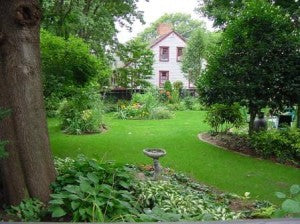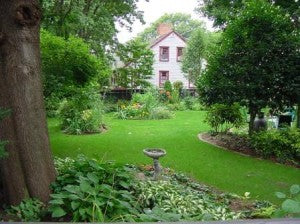A few days ago, I introduced the series Greenscaping and discussed step 1 of 5, which was titled, “Building and Maintaining Healthy Soil”. Greenscaping, in essence, is a set of landscaping practices that can improve the health and appearance of your lawn and garden while protecting and preserving natural resources. Today brings step 2 in this series.
Step 2: Plant Right for Your Site
Know your yard so you’ll know what plants can go where. What spots are sunny, shady? What is the pH of your soil? What type of soil do you have (e.g. sandy, clay)? All of these questions will help determine what plants can go where. Also, determine the location of plants, play areas, privacy, etc.
Choose the Right Plant for the Right Place
Based on the questions you answered above, select plants that do well in those conditions. Choosing native plants is equally as important because they have evolved with this environment over many years. Always envision the mature height and width of any plant before placement, especially near your house, driveway and power lines.
Choose Plants That Resist Pests
Some plants are more pest- and disease-resistant than others. Always research your potential plants before planting. This can save you time and money on pest control.
Give Plants a Good Start
Incorporate one to three inch layer of compost into your planting beds before planting. Follow instructions on proper planting instructions. A good layer of mulch atop your newly plantings, along with consistent water the first few years will help to build the deep roots that are desired.
Make Space for Wildlife
Invite birds, butterflies and other wildlife into your yard, protect streams and fish and make a more attractive yard. Some ideas include:
- Plant native plants. Consider varieties with berries, fruits and flowers.
- Plant in layers (e.g. ground cover, shrubs and trees) to mimic the forest.
- Don’t plant invasive plant species. Check with your local Cooperative Extension Office for a list of invasive “noxious weeds”.
- Use pesticides only when necessary to minimize harm to birds, beneficial insects and fish. Always follow the label directions when using.
- Provide a bird bath or similar water source. Make sure to change the water frequently to avoid a mosquito breeding ground.
- Leave wild “buffer” areas of native plants along ravines, streams and fencelines.
Learn more about attracting butterflies and hummingbirds.



